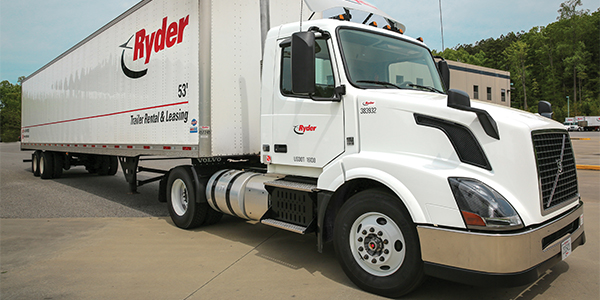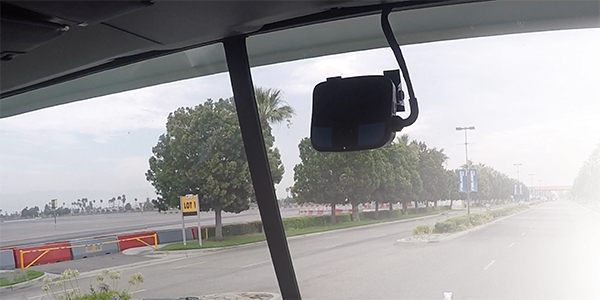In last month’s issue of Fleet Equipment, we ran an article, “The pros and cons of driver-facing cameras,” which, as the name implies, went over the debate concerning spec’ing driver-facing cameras. On the one hand, they can be beneficial to the fleet in the event of a lawsuit after a collision, as well as in driver training; on the other, many drivers consider them an invasion of privacy and may be moved to quit the fleet if the cameras are installed.
Soon after the article was published, FE spoke with Bob Prim, senior director of safety for Ryder, about his fleet’s experience installing driver-facing cameras. Ryder employs the Lytx DriveCam system on more than 5,000 of its trucks and plans to roll out the program to more trucks in the future.
Prim said that while drivers were apprehensive of the cameras at first, with many threatening to quit, in the end a “negligible” number of drivers quit and many actually praise the system today. Prim credits the process Ryder used in installing the system for the drivers’ acceptance, which includes these important steps.
1. Change your fleet policies
Prim says that the first thing Ryder did when instituting this program was to change its policies regarding driver discipline—changing the punishment for the events being identified by the driver-facing camera from immediate discipline to a coach-first approach.
“When you don’t know what’s going on in the cab, the tendency is to set high discipline policies as a deterrent—you know, if you don’t wear your seat belt, we’re going to terminate you,” Prim said. But he went on to say that adjusting your policy to coach-first can help you keep drivers in the seats, improve relationships with those drivers and catch behavior such as not wearing a seat belt before the driver actually gets a ticket.
2. Communicate with your drivers and hold meetings with them before installing the technology
This, Prim said, is the most important step.
“The key to the drivers’ acceptance [of the system], we think, was explaining to them how we intended to use the video technology before we installed it,” he said. “Every location had a driver meeting before we installed the DriveCam at that location, to show how we intended to use DriveCam.”
Ryder also asked their drivers for a chance to show them that they weren’t going to use the technology to punish or embarrass them. During its driver meetings, Ryder discussed the need for the driver camera and showed examples that were taken during its trial study that highlighted the fact that the interior camera protected the fleet’s drivers by exhibiting the drivers doing everything correctly.
“We also showed some examples where our drivers did not do everything correctly,” Prim said, “and how these videos were used—not to punish, but to bring awareness to our driver and to improve his or her driving.”
In all of the examples that Ryder showed, the driver’s faces were pixelated to protect their privacy. Privacy was a big talking point between Ryder and its drivers.
“We understood their concerns about privacy, that video technology can be intrusive, but our only focus was to use the video technology as a safety tool, and we were restricting our focus to safe driving,” Prim said. “By doing that, we hoped to earn the driver’s trust in how we were looking to use this tool. And I think that set a good precedent for rolling out the system. Once they see how their manager uses the information, and communicates with them, that trust level returns very quickly.”
3. Don’t limit your feedback to negatives
Just as important as identifying coachable behavior is taking the opportunity to use the cameras to recognize drivers for doing things the right way.
“I think the natural inclination is to think that this all going to be negative,” Prim said. “We made a point to communicate appreciation when we saw a driver avoid a collision or how they responded to an unusual event out on the roadway. Managers would use some of those videos, pixelated, and show it at a driver meeting to show the positives of what a driver did.”
According to Prim, many of Ryder’s managers reported that the camera systems actually improved relations with the drivers, “because they were talking, they were working together, they were identifying issues, and it was a positive discussion, not a finger-pointing session.”
Overall, Prim said that the technology has resulted in significant benefits for the fleet. According to Prim, collisions are down, collision costs are significantly down, and unsafe events in general are down thanks to the driver coaching by the managers and the response by drivers.
Prim said that when it comes to litigation and lawsuits after a collision, “it’s not enough to show that the other party was wrong; we’ve got to show that we were doing everything right. And the only way we can do that is with the internal camera. We try to share that with our drivers, and I think they recognize that.”














